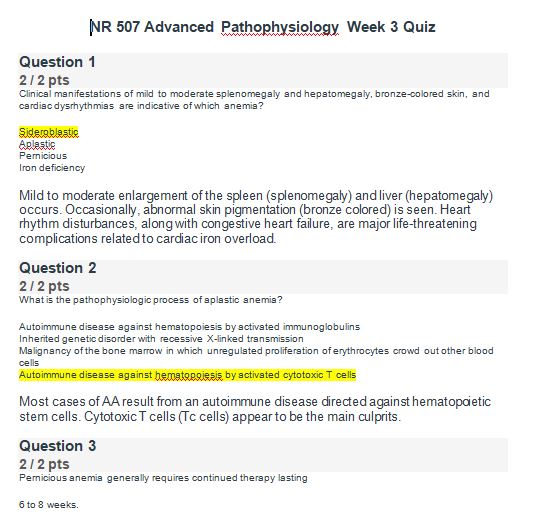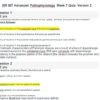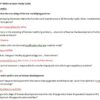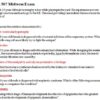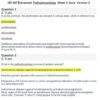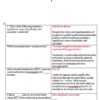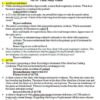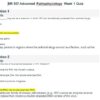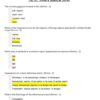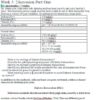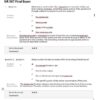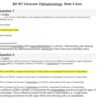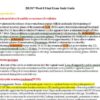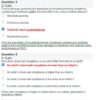Description
NR 507 Week 3 Quiz Advanced Pathophysiology
- Clinical manifestations of mild to moderate splenomegaly and hepatomegaly, bronze-colored skin, and cardiac dysrhythmias are indicative of which anemia?
- What is the pathophysiologic process of aplastic anemia?
- Pernicious anemia generally requires continued therapy lasting
- Symptoms of polycythemia vera are mainly the result of
- The body compensates for anemia by
- In hemolytic anemia, jaundice occurs only when
- Which of the following is a description consistent with acute lymphocytic leukemia (ALL)?
- What change is seen in leukocytes during an allergic disorder (type I) often cause by asthma, hay fever, and drug reactions?
- Heparin-induced thrombocytopenia (HIT) is describe as a(n)
- Local signs and symptoms of Hodgkin disease–related lymphadenopathy are a result of
- Erythroblastosis fetalis is define as an
- The type of anemia that occurs as a result of thalassemia is
- The sickle cell trait differs from sickle cell disease in that the child with sickle cell trait
- Polycythemia occurs in a fetus because
- In a full-term infant, the normal erythrocyte life span is _____ days, whereas the adult is _____ days.
- Hemolytic disease of the newborn can occur if the mother is
- Which of the following is a clinical manifestation of aortic stenosis?
- The pulsusparadoxus that occurs as a result of pericardial effusion is significant because it reflects the impairment of the
- The risk of developing coronary artery disease is increase up to threefold by
- What is the primary mechanism of atherogenesis?
- Which heart defect produces a systolic ejection murmur at the right upper sternal border that transmits to the neck and left lower sternal border with an occasional ejection click?
- The foramen ovale is covered by a flap that creates a check valve allowing blood to flow unidirectionally from the _____ to the _____.
- When does most cardiovascular development occur? nr 507 week 3 quiz
- What is the most important clinical manifestation of aortic coarctation in the neonate?
- Which congenital heart defects occur in trisomy 13, trisomy 18, and Down syndrome?

